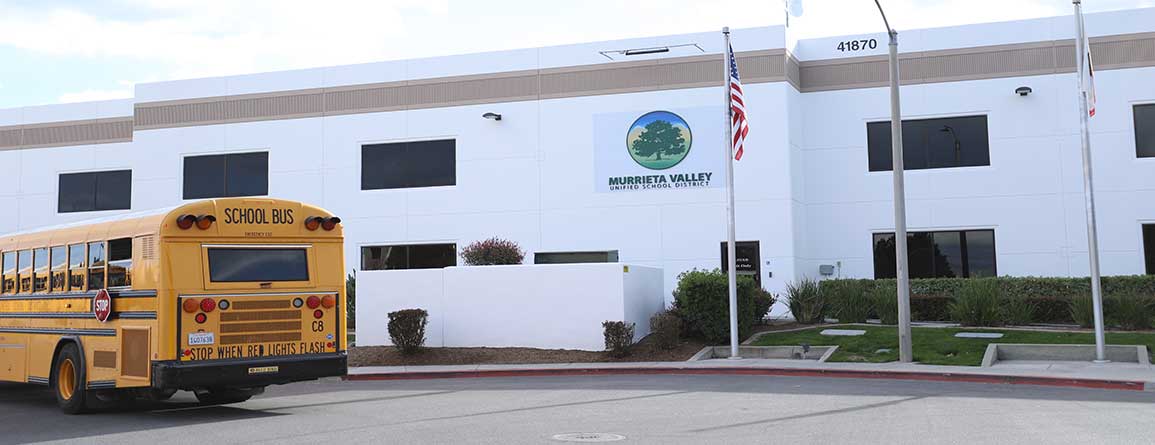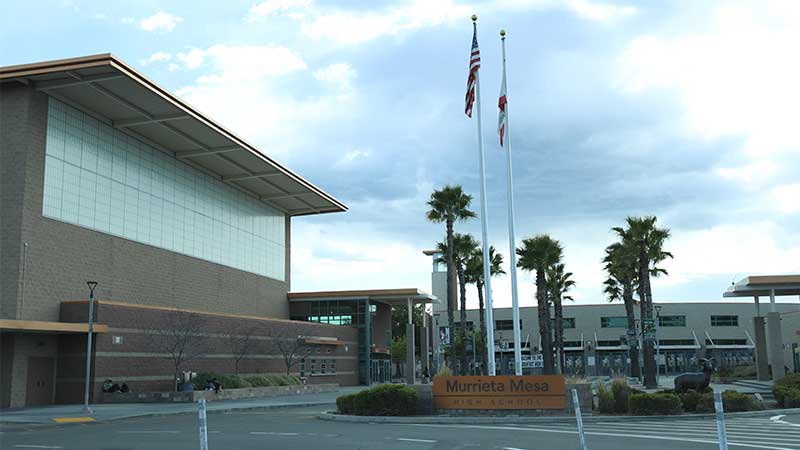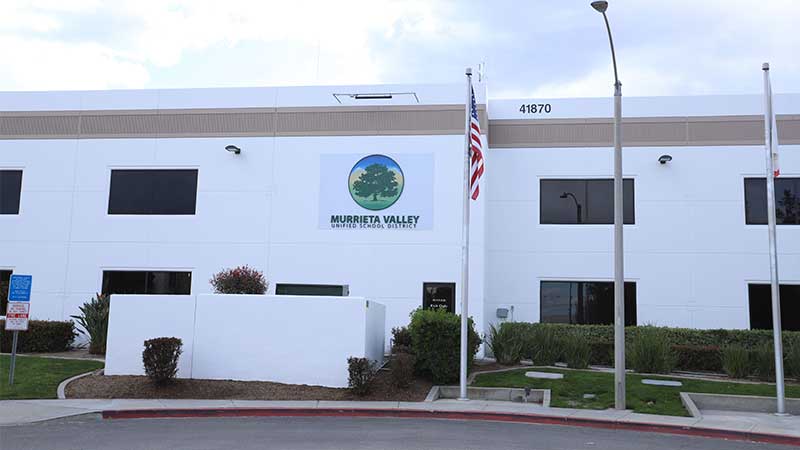High-resolution i-PRO cameras are key to school safety at Murietta Valley District Schools

- Client
- Murietta Valley District Schools
- Region
- Americas
- Location
- California
- Solution category
The Customer
When you ask Murietta Valley Unified School District Chief Technology Officer Jon Pratt who is responsible for student safety and security, his answer is, “Everyone.” That’s why, when the district began an initiative to modernize its security stance across all of its 22 schools with IP-based surveillance cameras, he brought together a stakeholder team with wide representation.
“The use cases for security camera systems in school districts can really vary, Pratt said. “Human resources, risk management, student support and its various roles, both centrally at district offices as well as on all sites -- each department has a different focus and their use of a system would tend toward different things.”
Murietta Valley Unified School District (MVUSD) in Riverside County, CA serves 23,000 students and has nearly 4,000 employees. It comprises 11 elementary schools, four middle schools, three comprehensive high schools, two alternative high schools, one virtual, independent and homeschool academy and one adult transition school. 13 of the district’s schools have been named California Distinguished Schools. Following extensive research and planning, the District standardized its security cameras system on i-PRO high-resolution network cameras.
When Pratt and the stakeholder team started the process of identifying the needs and expectations for a surveillance camera system for the District, they started by establishing a prime directive, which was the synthesis of the varied use cases from all departments into a system. “The Prime Directive guided us when there were competing interests,” he said.


The Challenge
Unique challenges
Some of the considerations the stakeholder team had to consider in its camera system design was its vast properties. Like most districts, MVUSD includes many buildings, large parking lots and open fields for sports. As Pratt noted, “Our properties are roughly the size of five Disneylands.” The district’s camera deployments also tend to be about 10 outdoor to every one indoor, which is completely the opposite to other sectors like retail and casinos.
Another unique aspect of school district installations is bursty traffic patterns. Football stadiums, for example, sit empty for days, but then may have thousands of people in them for a high-school game. Multi-purpose rooms in many schools, too, present bursty traffic. They may be used daily for lunch, then in the evenings have hundreds of parents and residents attending performances and events.
In designing the optimal surveillance system, Pratt and the team also had to consider the extreme growth spike the district had experienced in a 10-year period. “When a district maintains fairly steady sizes in its schools they can live with more legacy equipment. For us, those siloes couldn’t exist as we grew.”
The Solution
Centralizing and collaborating with law enforcement
The MVUSD team approached their project as a continuance, modernizing their first-generation surveillance system to new high-resolution i-PRO network cameras, and the i-PRO Video Insight video management system (VMS). They updated cameras in a phased approach and are scheduled to modernize the remaining 25% of low-resolution cameras to high-resolution models in summer 2024. “We have always been pleased with Panasonic cameras, so when it was time to update, we opted for a next-generation i-PRO solution,” Pratt said (since i-PRO was formerly Panasonic).
The system is centralized, with a network operations center (NOC) at the district office and local monitoring at each school. Five servers move footage between the schools and the NOC. Thanks to E-Rate funding, the district has a sophisticated network deployment that supports the bandwidth required for hundreds of resource officers, risk managers, principals and others to access and use their surveillance system.
Additionally, MVUSD has established a collaboration with local police departments, which are able to connect to their camera system. “Every sworn officer has access to our camera system from their mobile devices,” said Pratt. “The ability to have our first responders close to our system is a critically important tool in responding to life safety issues.”
Resolution = action
In choosing their next-generation cameras, Pratt and the team placed critical importance on high resolution to help them address key challenges such as fights, altercations, and vandalism. The new cameras eliminate the frustration that comes with low quality footage. “Graffiti is a common example,” he said. “It happens when no one is around, and usually, the camera is the only witness. If the footage is poor quality you can’t rely on it to stand by itself as evidence. So you pull in a lot of people -- campus supervisors, teachers, anyone who might recognize the culprit. If the footage is just too poor, you end up with no actionable information. You’ll just see the incident happening, and everyone is frustrated that trying to suss out the footage ultimately went nowhere. Bad quality footage is sometimes worse than none at all. Starting with high resolution cameras like i-PROs is one of the best decisions you can make.”
The district’s journey to 4K continues to be validated. Said Pratt, “Having more resolution, more information to use is a universal utility, whether it’s humans interacting with footage, for analytics, or any future technology.”
While the district hasn’t yet deployed analytics in its camera system, Pratt notes that they’re investigating the Smart Search capability included in i-PRO’s Active Guard analytics plug-in to their Video Insight VMS, which enables real-time searches and deep forensic analysis of their surveillance video. “Searching for footage is a time-intensive process. Smart Search can save a lot of time for many people.” He’s also looking at other areas and use cases where analytics can provide insight into anomalies and alerts on situations like a child opening a door that they shouldn’t be.
When asked what guidance he might give to other school districts involved in security modernization, Pratt says, “Security camera systems are a key realm of improvement school districts can control. Establish that prime directive, and define how security and safety is prioritized for your system -- that’s an important first step. Other things flow naturally from there. Have good, broad coverage of your campuses, ingress and egress, and high-congregate spaces. And push for high resolution cameras. We’re in generation one of high resolution, but we won’t stop there. We’re already preparing for 8K, for the next generation.”